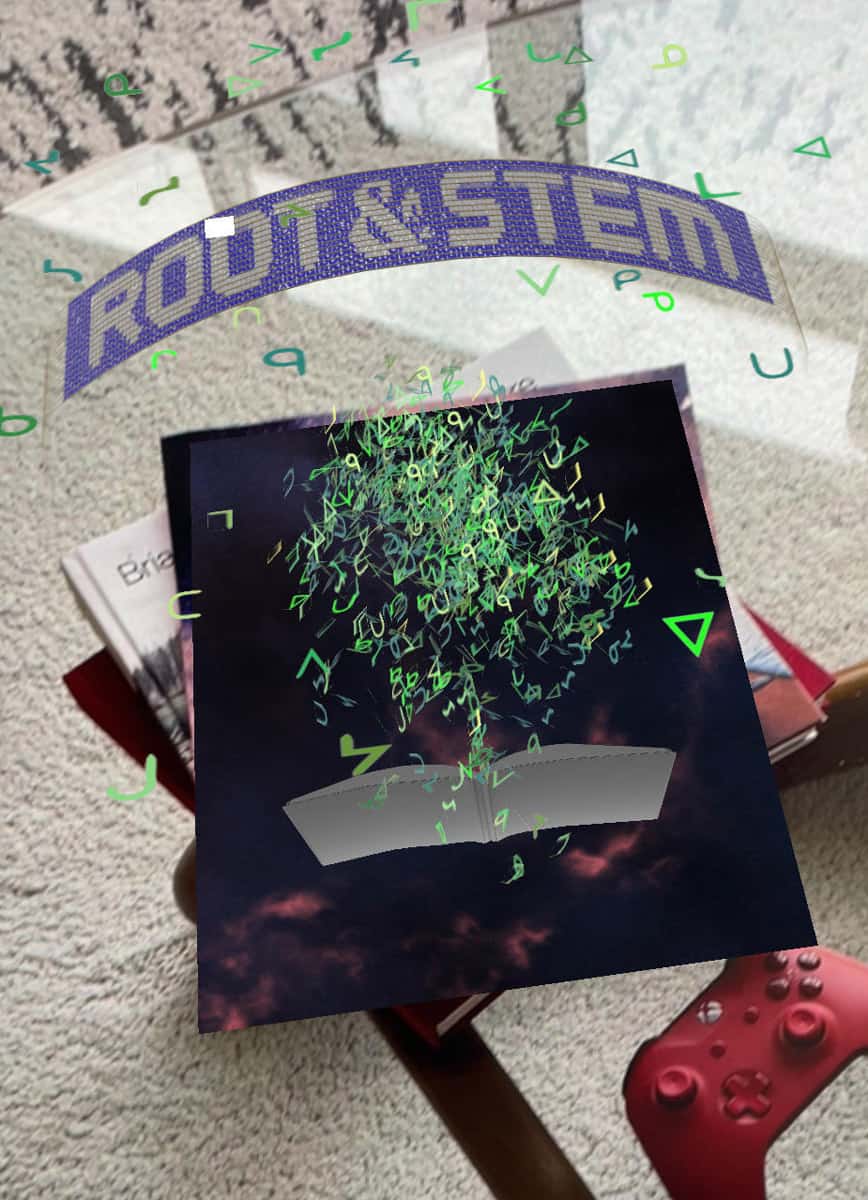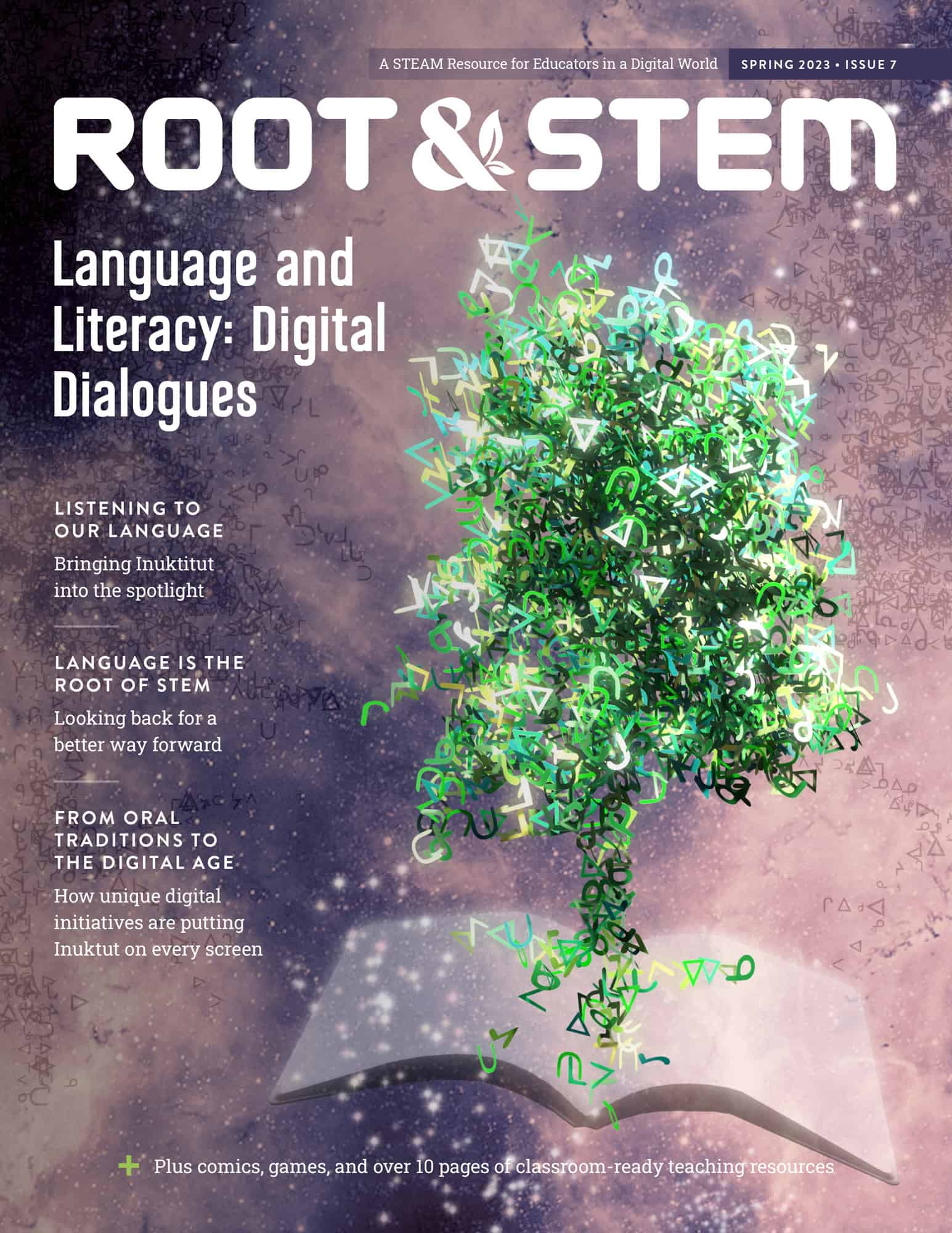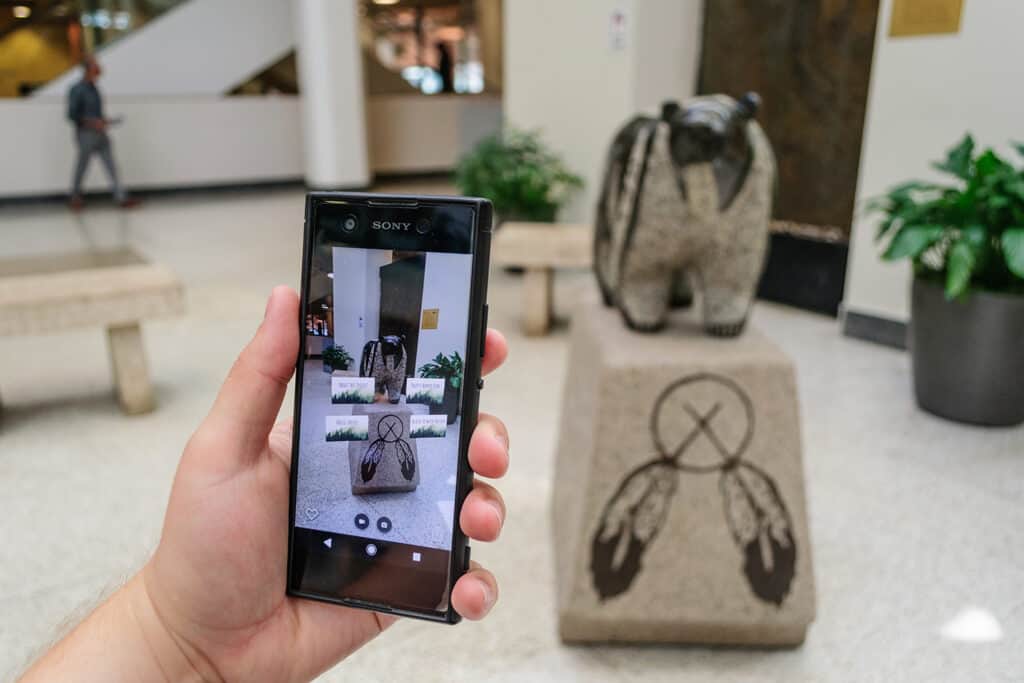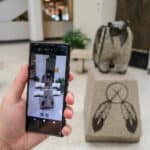By Alina Eyamie
Everywhere we look these days, augmented reality (AR) has become a part of our world. In some cases, it’s so integrated into our daily lives that we don’t even notice the brilliance and ingenuity behind it. Just think about it: we take pictures with Snapchat camera filters, we can track and view Pokémon on our screens through the Pokémon GO app, and Google Maps helps identify destinations through informational pop-ups. These are all examples of practical uses of AR.
AR has the potential to bring many things to life in new and exciting ways. It allows us to explore new universes, interact with characters, and explain learning concepts more effectively.
What Is Augmented Reality?
The term augment means “to add.” Essentially, AR combines the virtual world with the physical one by overlaying or adding images, videos, or graphic displays on top of the real environment to create an interactive graphic. AR content usually includes 25 per cent digital reality and 75 per cent actual reality. Instead of depicting a completely virtual environment on-screen with a headset the way virtual reality (VR) does, AR integrates virtual objects into the real world via a screen. To see what AR can look like, scan the QR code below with a mobile device and place the device over the cover. A new image will pop up on your screen just like the image below.
 Courtesy of Quinn Hopkins
Courtesy of Quinn Hopkins

Another great example of AR use is in Google Glasses, which can display information about any place or object as a user is walking through or past it. The product combines AR with a wearable hands-free device that allows users to speak and listen to commands using voice recognition. A user could say, “Take me to the nearest park” and follow turn-by-turn directions that pop up on their glasses.
An AR Approach to Education
AR is becoming more accessible and can be integrated into classrooms of all grades and curricula—the possibilities are endless! Teachers and educators can explain classroom concepts more thoroughly by bringing their lessons to life.
- AR is a great tool for kinesthetic learners and auditory learners who like to interact with their environments. These students can retain information better when presented with a virtual (and audio-visual) aspect, thus improving their memory of class material. For example, the SkyView app, made by software engineer Maurizio Leo, allows students to explore the universe using an AR overlay of the night sky. The user simply points their mobile device to the sky to pinpoint the constellations, stars, and planets. In 2019, a Toronto design agency partnered with the Canadian Media Fund to create an interactive AR app called Wild Cities. The app is centred around teaching younger generations about the concept of climate change through storylines that explore Canada’s ecosystems and landscapes with AR technology.
- AR educational applications can make the learning experience more unique and independent. Educators can’t necessarily take students to India to see the Taj Mahal, or France to see the Louvre, but they can visit virtually through a series of immersive field trips with Google Expeditions. Each student can explore the particular landmarks and monuments that interest them, while still learning a lot about each place as a whole.
- AR could help create lesson plans that have a multi-sensory approach, as opposed to using traditional textbook material. Students can take part in physical activities while virtually immersed in an interactive environment. Just think: they can view cell models of plants and animals without a microscope, or interact with deep sea whales that live at the ocean floor.
AR in Literacy and Language
Literacy is a critical part of the growth and development of children. Early childhood education typically includes the basics of written and spoken language. AR could make the learning process for this sort of literacy fun and memorable from a young age. For example, Narrator AR, created by Karina Youdale, is an app with an interactive twist for practising handwriting, helping to reinforce correct letter and number formations for young students. The contribution of AR to literacy learning could also help children learn languages faster and more easily. Alphabet-AR, by 360ed, is a resource aimed at teaching children English using AR and linguistic games, encompassing English vocabulary, alphabet, and grammar lessons.
AR and Indigenous Storytelling
AR can also be utilized to promote Indigenous knowledge, focusing on topics like storytelling, culture, and language revitalization. For example, students and professors from the University of Alberta worked with Cree Knowledge Keepers from Saddle Lake Cree Nation to produce the We Are All Related AR project, which led to the creation of the Sweetgrass Bears, four locations of AR-enhanced sculptures along a story trail on the university campus. The sculptures were carved by Stewart Steinhauer as markers of Treaty 6 that embody Cree knowledge, teachings, and treaty relationships. Users can scan different parts of the sculptures to find audio, images, and videos that bring treaty knowledge to life.

Sharing Indigenous teachings using AR and the Sweetgrass Bear Treaty 6 marker carved by Stewart Steinhauer (Saddle Lake Cree Nation).
Courtesy of Greg Whistance-Smith
AR technology is proving to be an innovation that is transforming education in literacy, language, Indigenous knowledge, and the way we interact. Fusing the physical and digital worlds, it opens up opportunities for learning in an interactive and immersive way.

